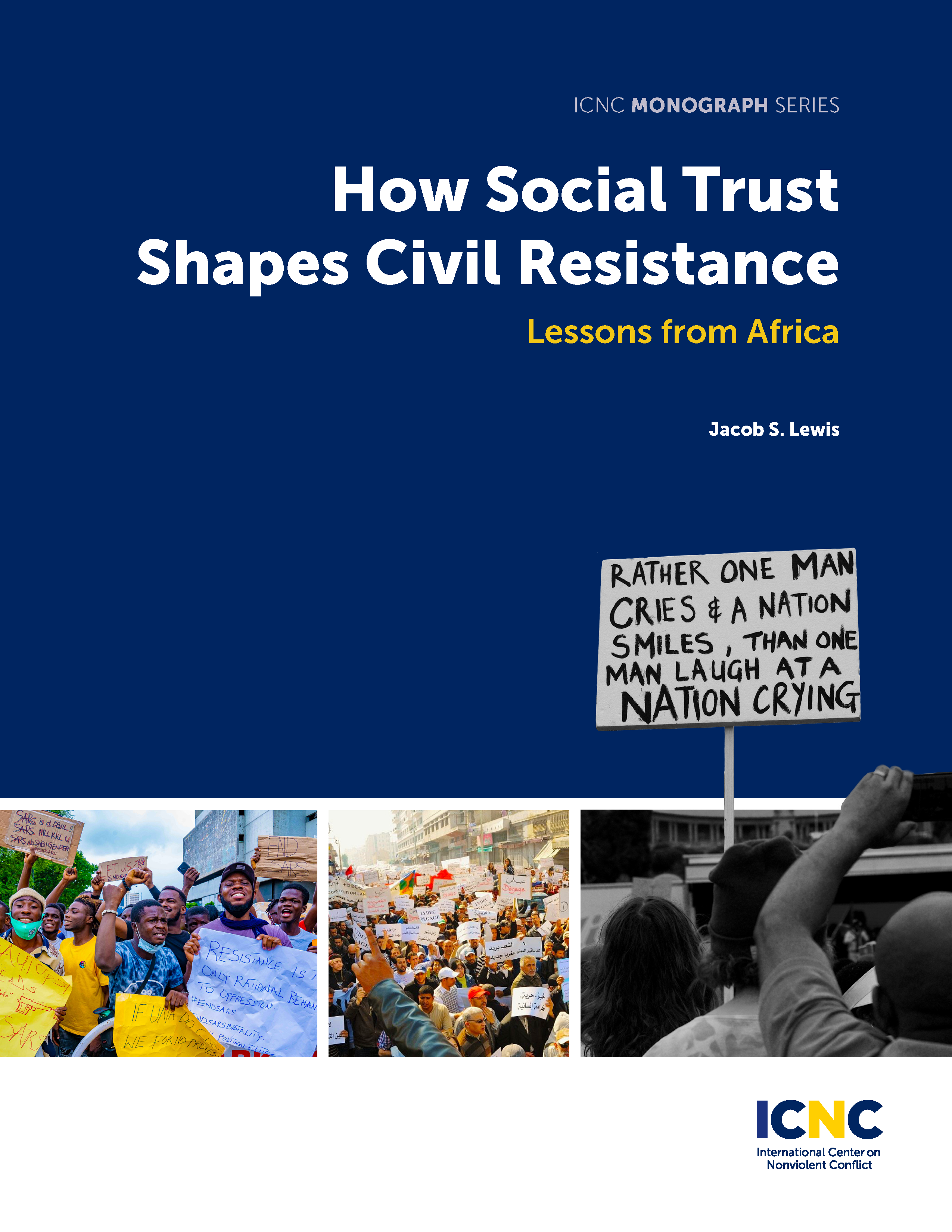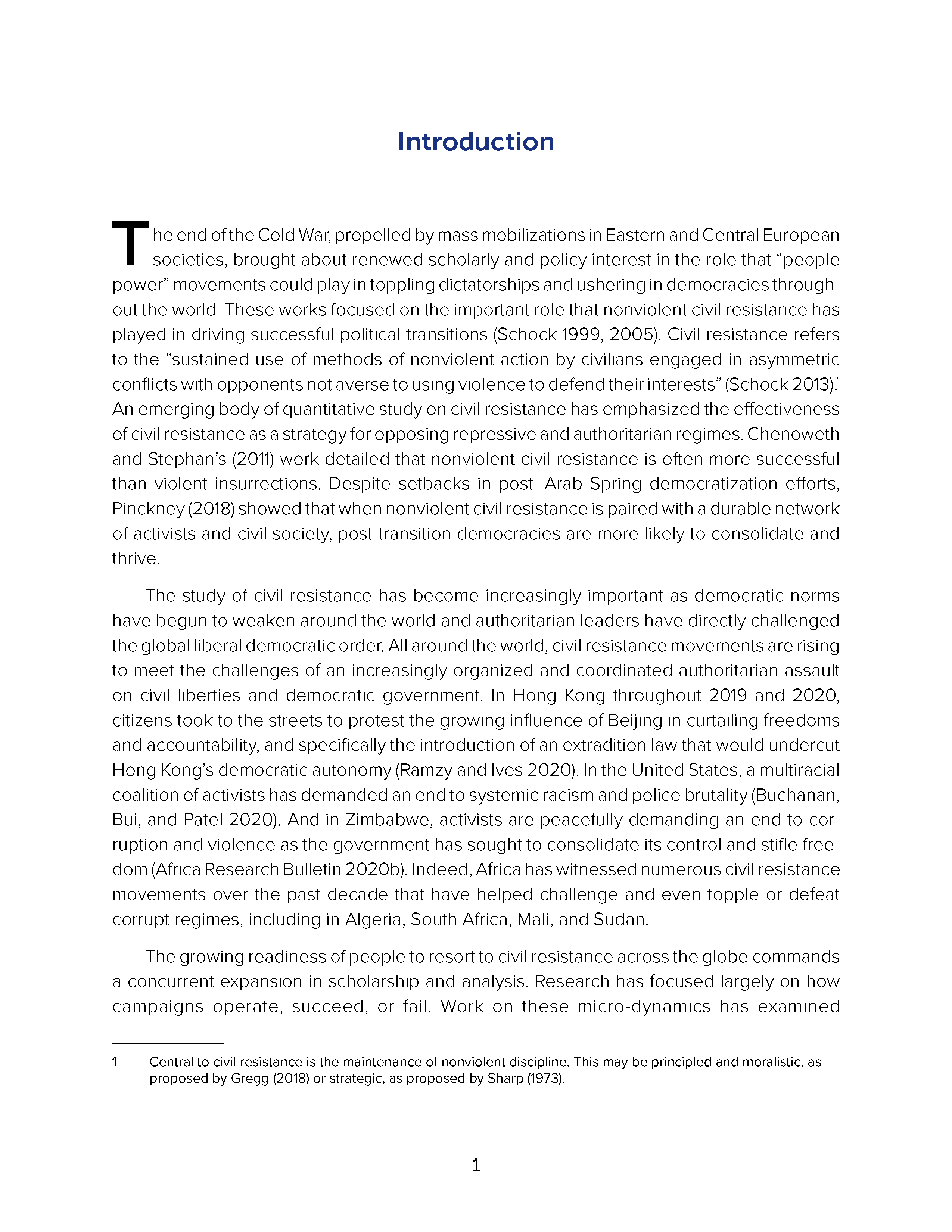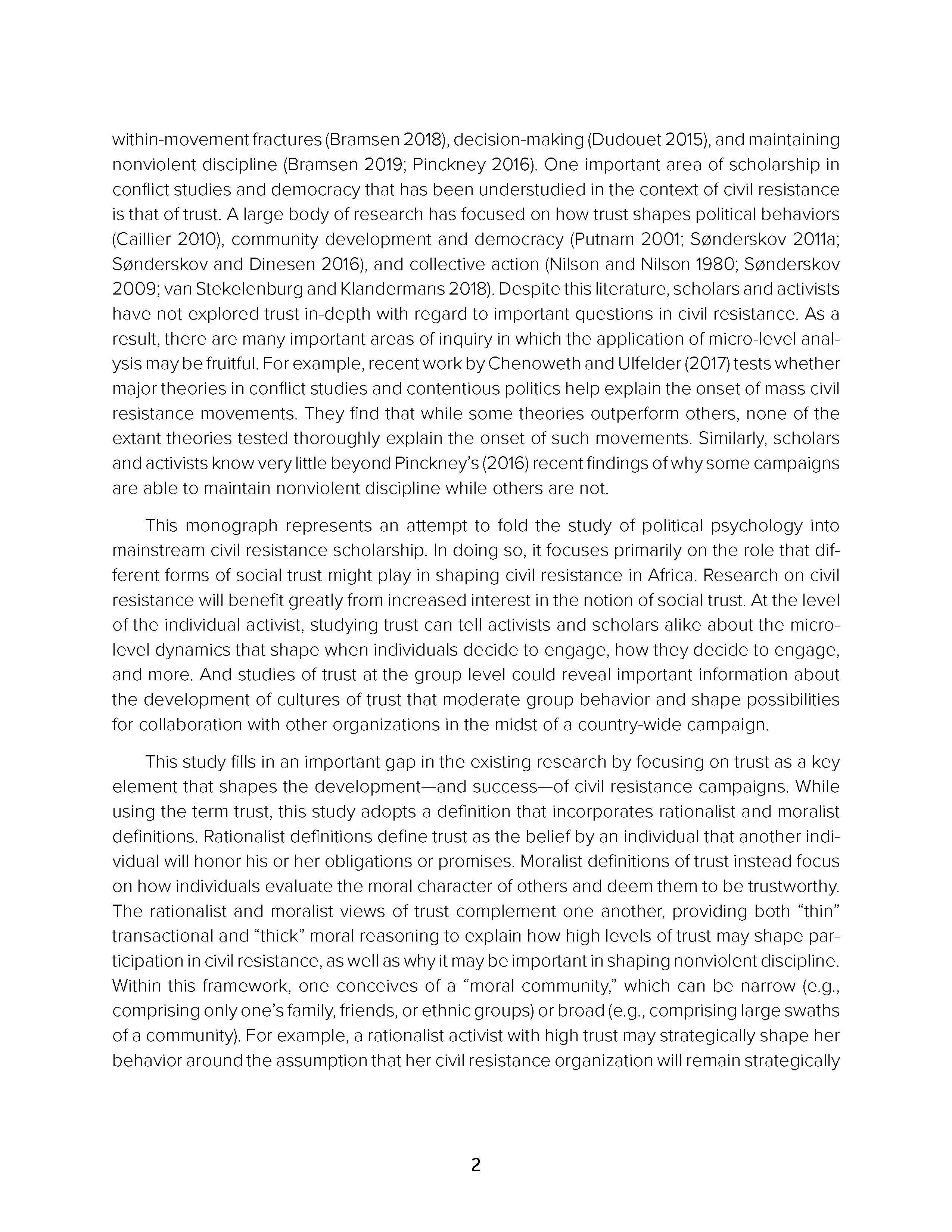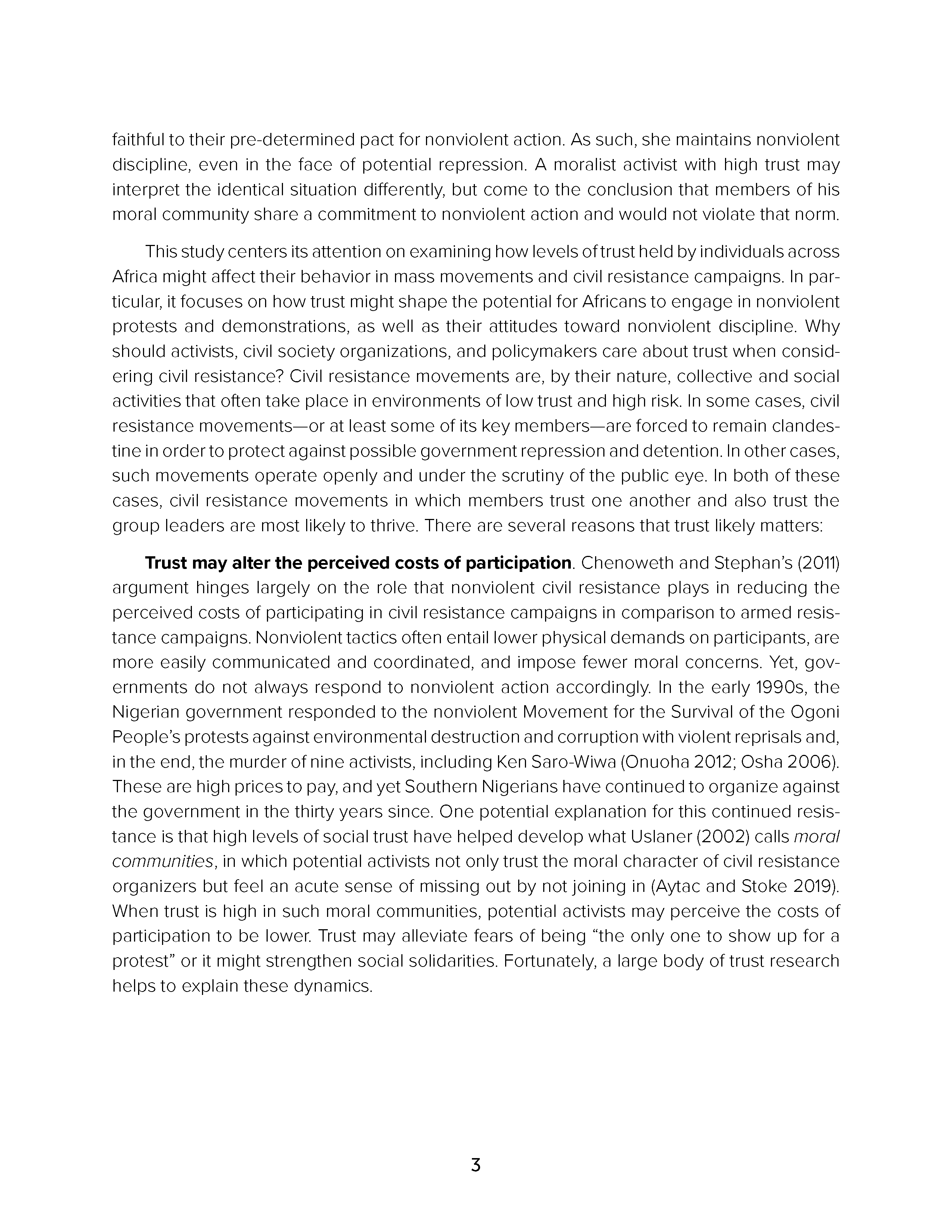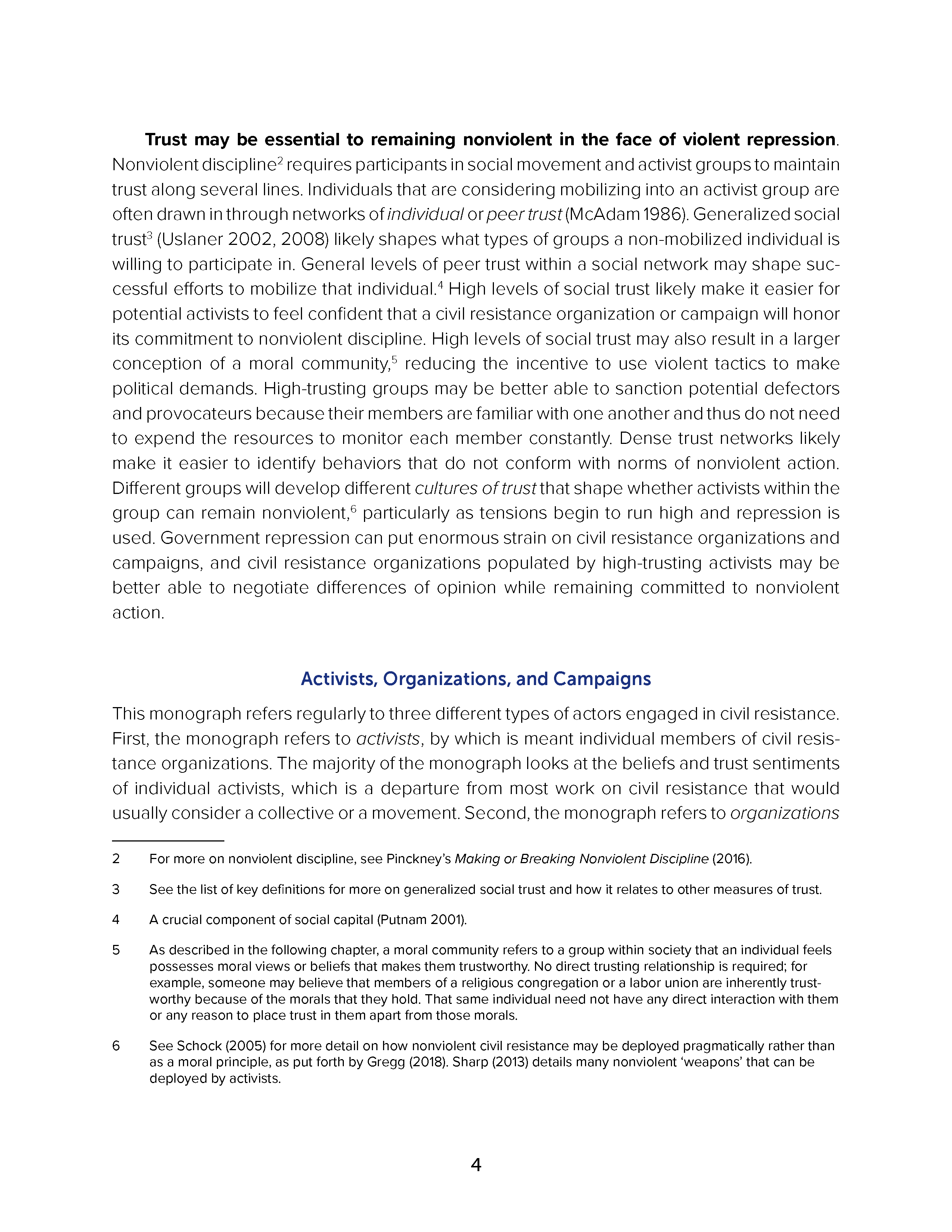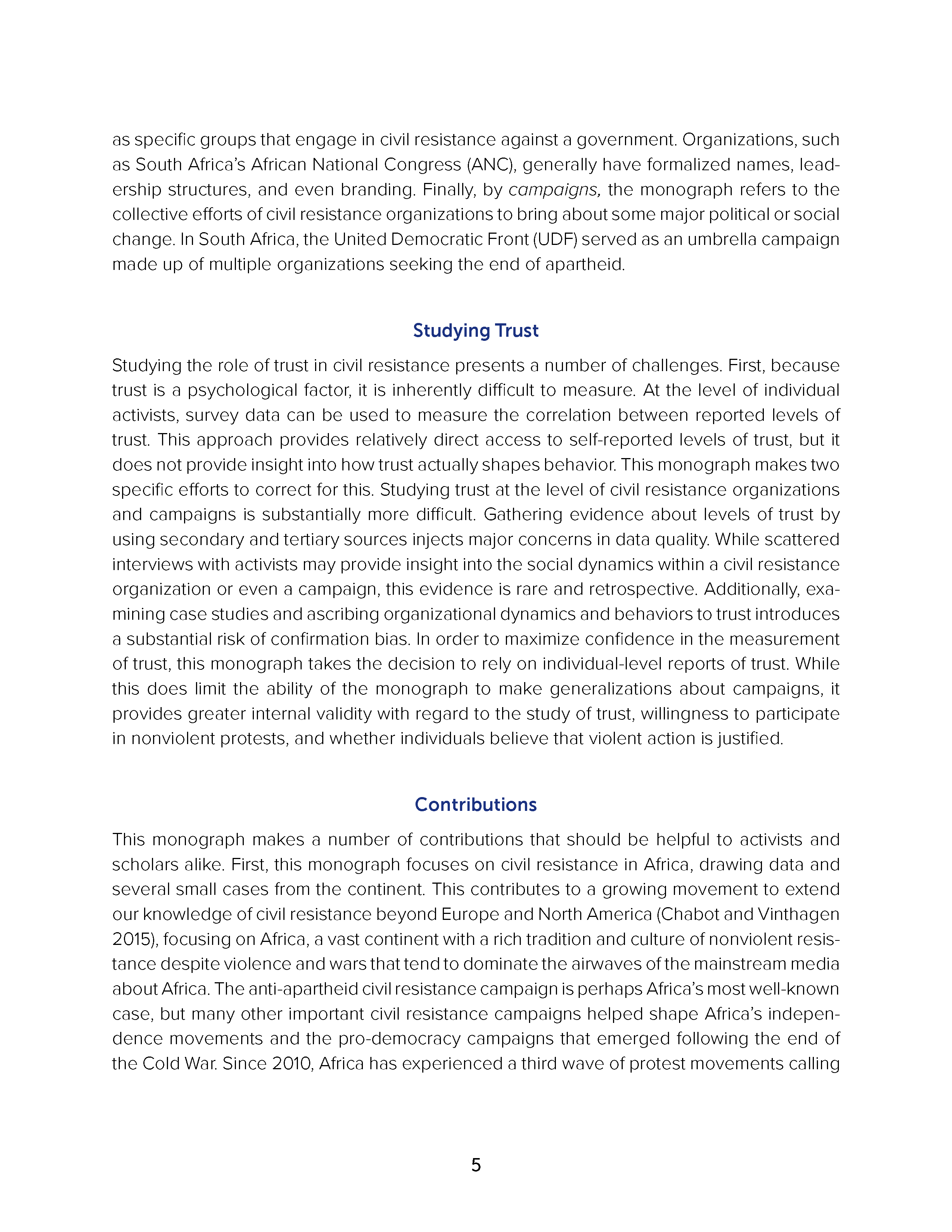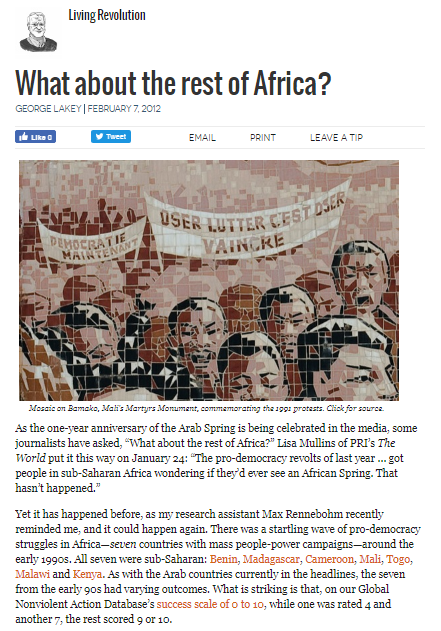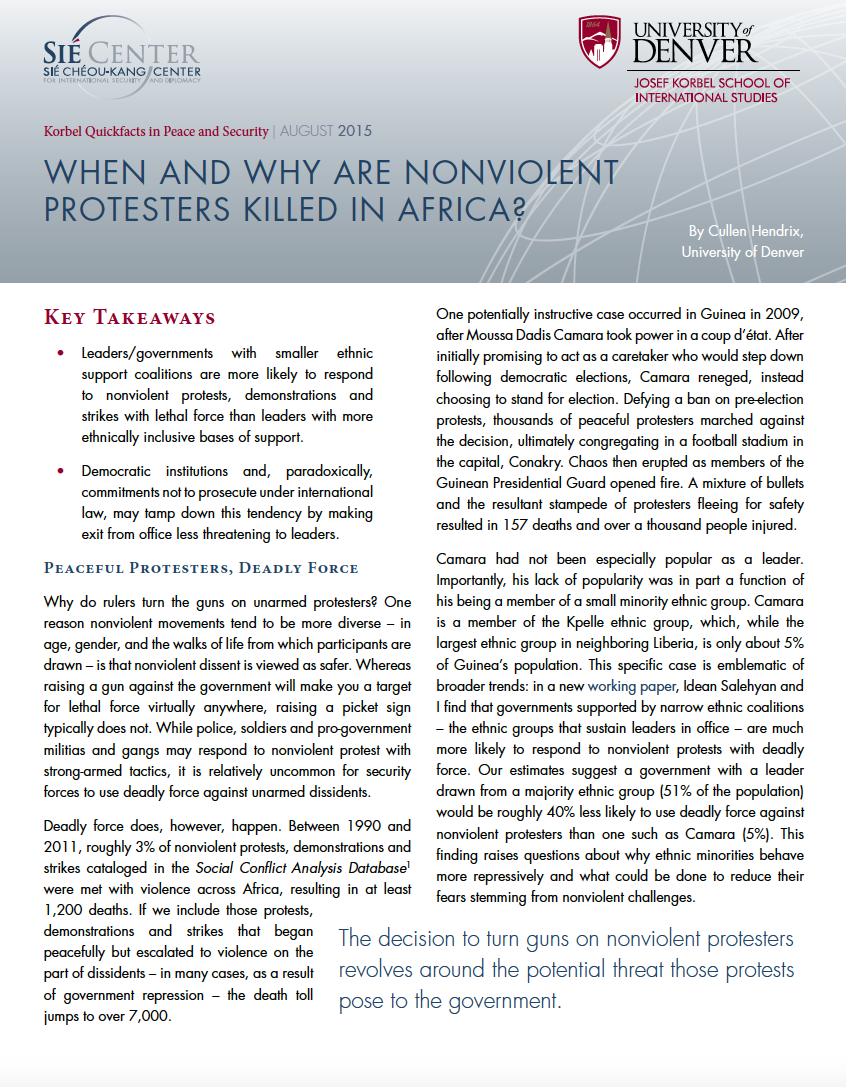How Social Trust Shapes Civil Resistance: Lessons from Africa
What role does trust play in shaping the outcomes of civil resistance campaigns? Trust has been found to be a critical factor in building political and social capital, encouraging group cohesion, and overcoming collective action problems. Despite this, trust has not been directly addressed by the civil resistance scholarship. This monograph addresses this lacuna by examining how trust shapes – and is shaped by – three levels of mobilization: trust at the individual level, trust within activist groups, and trust across resistance campaigns.
Published: August 2021
